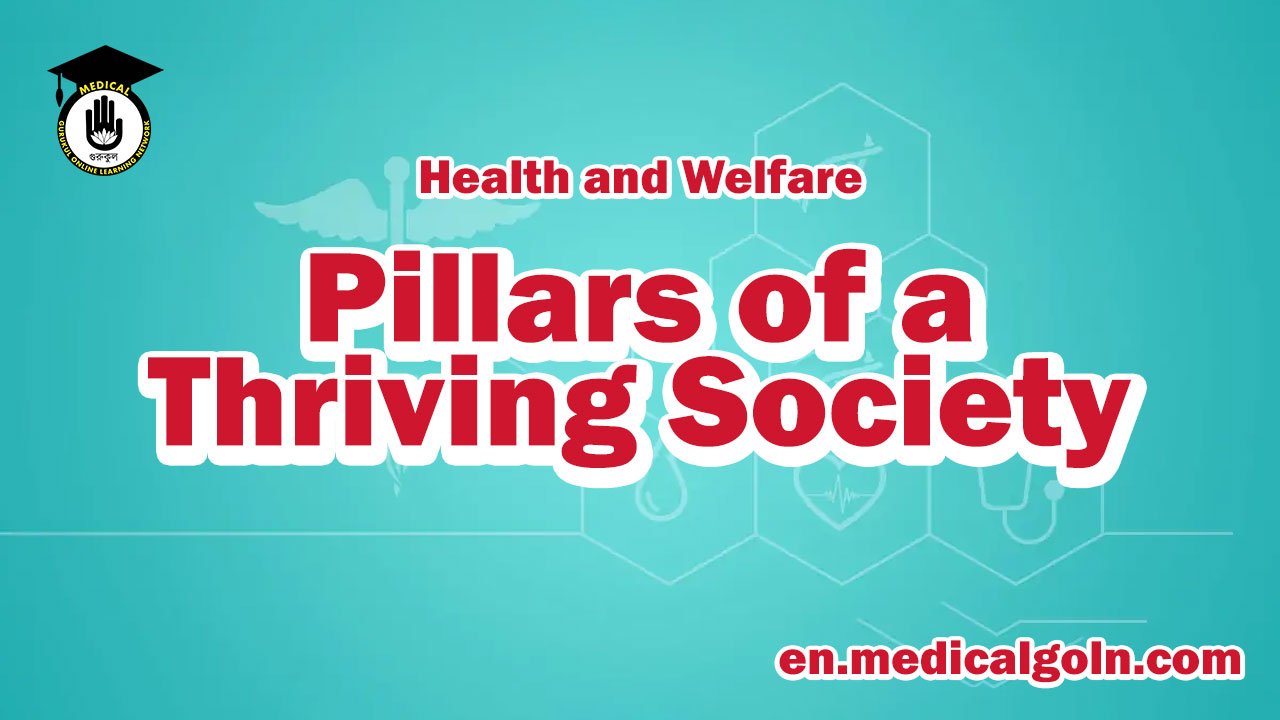Health and welfare are fundamental components of a thriving society. They encompass a wide range of factors that contribute to the overall well-being of individuals and communities. This article explores the intricate relationship between health and welfare, the various dimensions involved, and their collective impact on societal prosperity.
Health and Welfare: Pillars of a Thriving Society
Understanding Health and Welfare
Health refers to the state of complete physical, mental, and social well-being, not merely the absence of disease or infirmity. It involves a holistic approach, recognizing that well-being is influenced by a myriad of factors, including genetics, lifestyle choices, environmental conditions, and access to healthcare services.
Welfare pertains to the social support systems and policies designed to ensure the economic and social well-being of individuals. This includes programs aimed at providing financial assistance, healthcare, education, housing, and other essential services to those in need.

The Interconnectedness of Health and Welfare
Health and welfare are deeply intertwined. Good health enables individuals to participate fully in society, pursue education and employment opportunities, and lead fulfilling lives. Conversely, welfare programs ensure that individuals have access to the necessary resources and services to maintain their health and well-being.
- Economic Stability and Health: Economic stability is a key determinant of health. Individuals with stable income are more likely to afford nutritious food, secure housing, and healthcare services. Welfare programs that provide financial assistance, unemployment benefits, and housing subsidies play a crucial role in mitigating the effects of economic instability on health.
- Healthcare Access and Welfare: Access to quality healthcare is essential for maintaining health. Welfare programs that offer healthcare coverage, such as Medicaid and Medicare in the United States, ensure that vulnerable populations, including low-income families, the elderly, and the disabled, receive necessary medical care.
- Education and Health: Education is another critical factor influencing health outcomes. Educated individuals are more likely to engage in health-promoting behaviors, understand medical advice, and make informed decisions about their health. Welfare programs that support education, such as scholarships, grants, and school meal programs, contribute to better health outcomes.
- Social Support and Mental Health: Social support systems, including family, community networks, and welfare services, are vital for mental health. Emotional support, social interaction, and access to mental health services help prevent and manage mental health conditions. Welfare programs that provide counseling, social work services, and community centers enhance social support and mental well-being.

Key Components of Health and Welfare
Healthcare Services: Access to comprehensive healthcare services is fundamental. This includes preventive care, primary care, specialty care, mental health services, and emergency care. Ensuring that healthcare services are affordable, accessible, and of high quality is essential for promoting health and welfare.
- Nutrition and Food Security: Proper nutrition is critical for health. Welfare programs that address food insecurity, such as food stamps (SNAP) and school meal programs, help ensure that individuals have access to nutritious food. Education on healthy eating habits and access to fresh produce are also important components.
- Housing and Living Conditions: Safe and stable housing is a determinant of health. Overcrowded or substandard living conditions can lead to various health issues, including respiratory problems, infections, and mental health disorders. Welfare programs that provide housing assistance and improve living conditions contribute to better health outcomes.
- Income Support and Employment: Financial stability through income support and employment opportunities is crucial. Welfare programs that offer unemployment benefits, disability benefits, and job training help individuals achieve economic stability, which in turn supports their health and well-being.
- Education and Skill Development: Education and skill development programs empower individuals to secure better employment opportunities and lead healthier lives. Welfare initiatives that support early childhood education, adult education, and vocational training contribute to the overall welfare of individuals.
- Social and Community Services: Social and community services, including childcare, eldercare, and disability support services, play a significant role in ensuring the welfare of vulnerable populations. These services provide essential support that enables individuals to lead independent and dignified lives.
Challenges in Health and Welfare
Despite the importance of health and welfare, several challenges persist:
- Economic Inequality: Economic disparities lead to unequal access to healthcare and welfare services. Addressing income inequality and ensuring equitable distribution of resources is crucial for improving health and welfare.
- Healthcare Access: Barriers to healthcare access, including high costs, lack of insurance coverage, and geographical limitations, hinder individuals from receiving necessary care. Expanding healthcare coverage and reducing costs are essential steps.
- Mental Health Stigma: Stigma associated with mental health conditions prevents individuals from seeking help. Increasing awareness and reducing stigma through education and advocacy are important for improving mental health care.
- Resource Allocation: Limited resources and budget constraints often affect the effectiveness of welfare programs. Efficient resource allocation and prioritization are necessary to maximize the impact of welfare initiatives.
- Policy Implementation: Effective implementation of health and welfare policies requires coordination among various stakeholders, including government agencies, healthcare providers, and community organizations. Ensuring that policies are implemented effectively and reach the intended beneficiaries is critical.

The Way Forward
To enhance health and welfare, a multifaceted approach is required:
- Policy Reforms: Implementing policy reforms that address the root causes of health disparities and provide comprehensive support systems is essential. This includes expanding healthcare coverage, increasing funding for welfare programs, and promoting policies that reduce economic inequality.
- Community Engagement: Engaging communities in the design and implementation of health and welfare programs ensures that they address the specific needs of the population. Community-based initiatives and participatory approaches can lead to more effective and sustainable outcomes.
- Education and Awareness: Raising awareness about the importance of health and welfare and educating individuals about available resources and services empower them to make informed decisions. Public health campaigns, educational programs, and community outreach are vital components.
- Collaboration and Partnerships: Collaboration among government agencies, non-governmental organizations, healthcare providers, and private sector partners is essential for creating a cohesive and integrated health and welfare system. Partnerships can leverage resources and expertise to address complex challenges.
Health and welfare are fundamental pillars of a thriving society. They are interdependent and collectively contribute to the overall well-being of individuals and communities. By addressing the challenges and implementing effective strategies, we can enhance health and welfare, leading to a more prosperous and equitable society. Investing in health and welfare is not only a moral imperative but also a pragmatic approach to building a resilient and sustainable future for all.
Know more:
